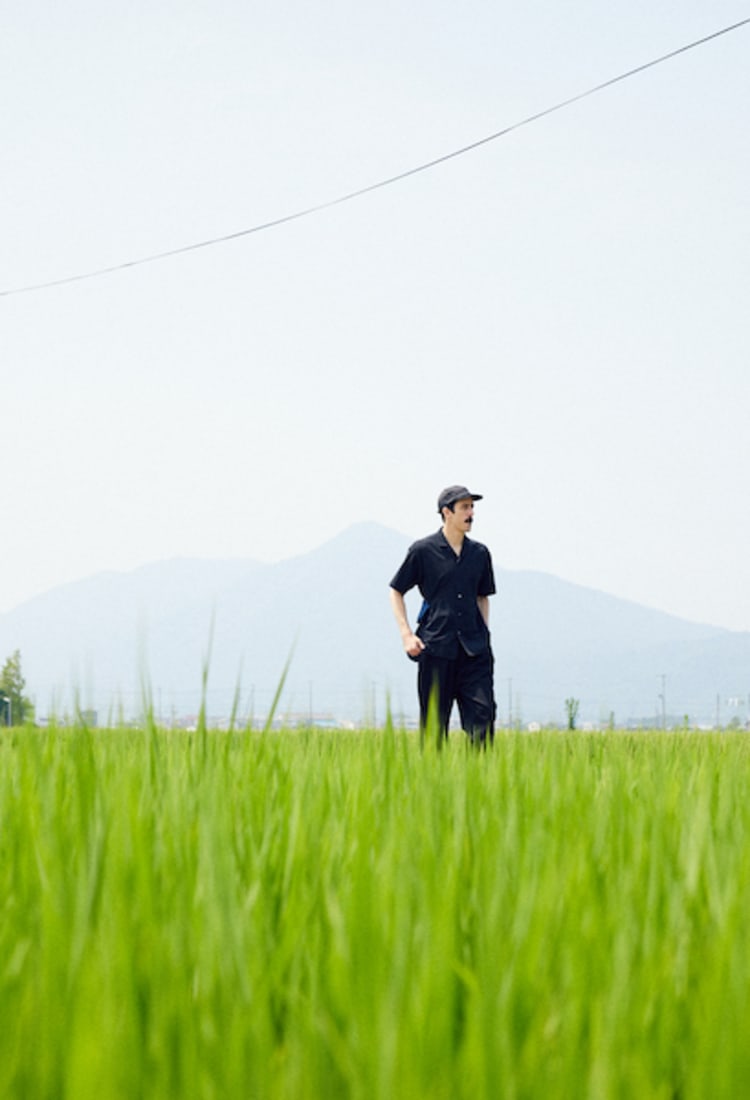
Discover Japanese food and natural beauty in Niigata with Australian editor (Part I of II)
Discover Japanese food and natural beauty in Niigata with Australian editor (Part I of II)
Stroll along the local shopping street as you wait for the tour bus at Maki Station
JR Maki Station will serve as the hub of your travels to Nishikan in Niigata. It takes about 40 minutes to get to this local station on the JR line from Niigata Station (located in the center of the prefecture), or about three hours from Tokyo Station if you take the Joetsu Shinkansen and then switch to the JR Echigo Line.
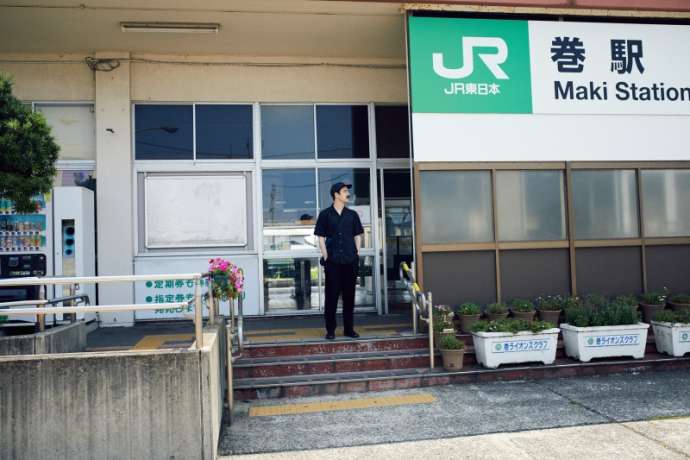
It’s not a large station by any means, but Maki Station started offering the Nishikan Ward Tourism Loop Bus in July 2019, making it the best place to kick off your journey. The bus runs on Saturdays and Sundays each week.

The tour bus starts at Maki Station before making stops at a variety of tourist attractions in Nishikan—including Uwasekigata Park (home of the Rice Straw Festival), Kakudahama Beach Resort, Iwamuro Hot Springs, the Takarayama Shuzo sake brewery, and the Cave d’Occi winery.

One of the best features of the bus is the gorgeous scenery you get to enjoy from your window as you travel. The route passes through rice paddies, hills, along the sea coast, and even through winding mountain roads. Just riding the loop through these different parts of Nishikan makes for a delightful activity.
BD: It’s great to take in the scenery from a different perspective to a rental car or taxi. The vast green of the rice fields and farms in particular feels very Japanese.
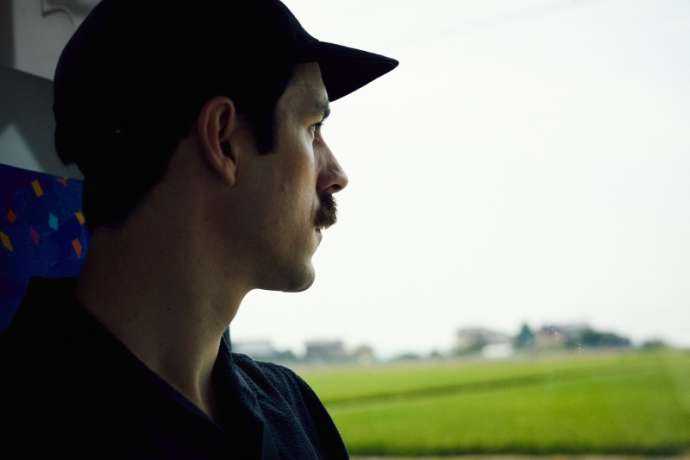
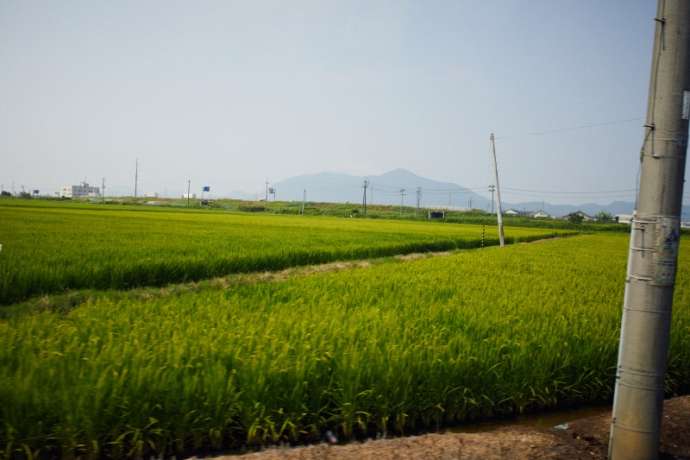
The tour bus only operates on Saturdays and Sundays through December 29, 2019, offering five runs a day. A single ride is ¥200, and an all-day pass is ¥500. Showing your bus ticket at the various tourist attractions on the route can earn you discounts and freebies as well. If you walk about five minutes to the west from Maki Station, you’ll get to Maki Taiguruma shopping street, which is lined with neighborhood shops. If you have some time before the bus arrives, use it to enjoy a stroll and the fresh air while interacting with the locals.
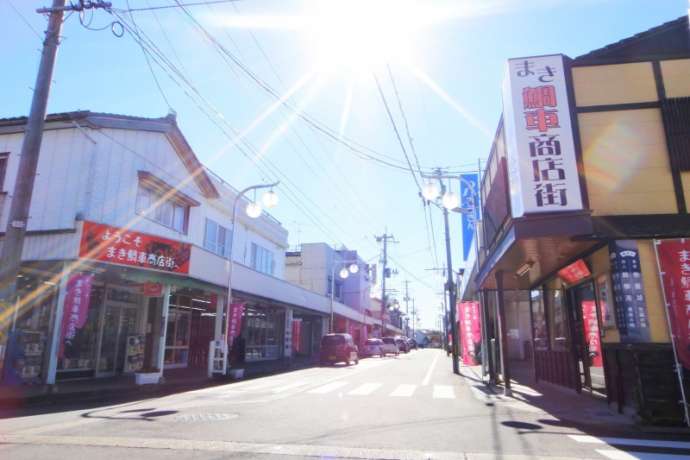
|
Welcome to Nishikan, Niigata City / The Nishikan Gurun Tour Bus |
Uwasekigata Park is home to the Rice Straw Art Festival and beautiful flowers in every season
From Maki Station, Ben heads out to Uwasekigata Park, about 12 minutes by car or on the tour bus. This massive park is a signature attraction of Nishikan and a great place to experience each of Japan’s distinct four seasons.
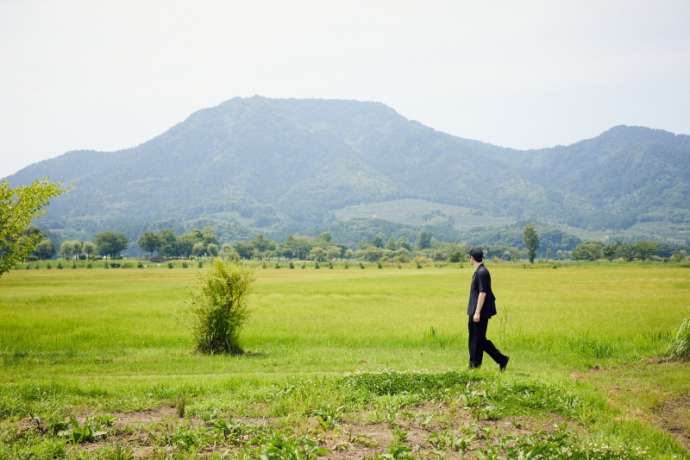

Some 450 cherry trees line a two-kilometer walkway through the park, and are a delight in spring when they are in full bloom. There are also rape blossoms, hydrangea, sunflowers, and cosmos flowers scattered throughout the vast park, every season offering something different to enjoy.
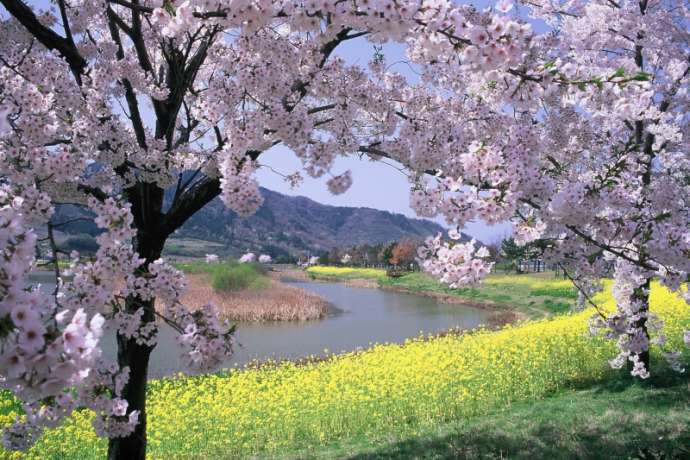
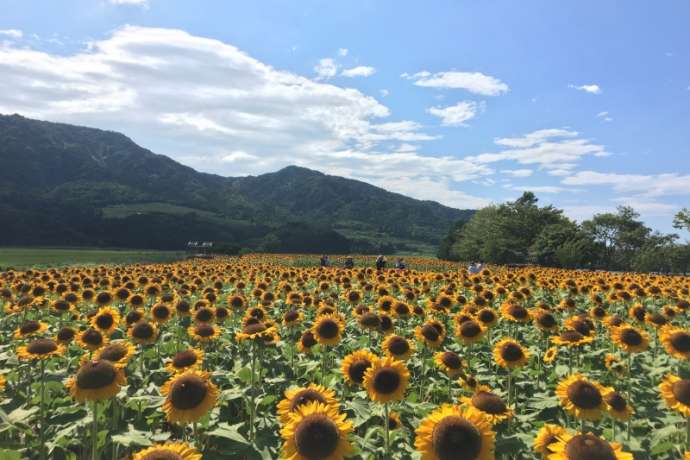
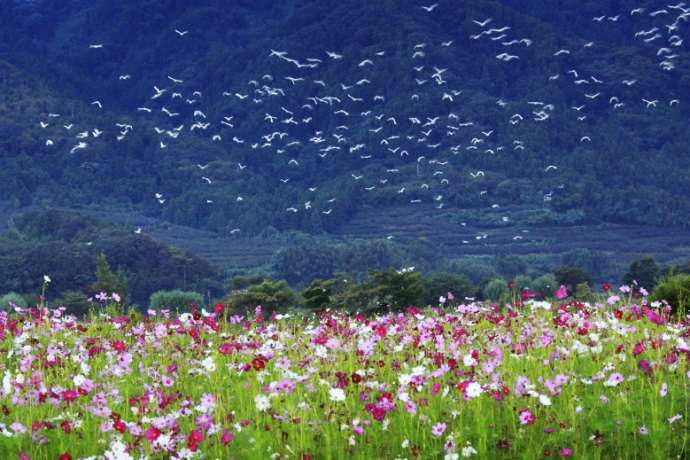
The park’s grassy areas are home to butterflies, dragonflies, cicadas, grasshoppers, and frogs, while an 11-hectare pond draws in wild birds. Winters are said to bring in endangered storks. Ben took in the fresh air (a rare treat given his typical city life) and had a refreshing experience there.
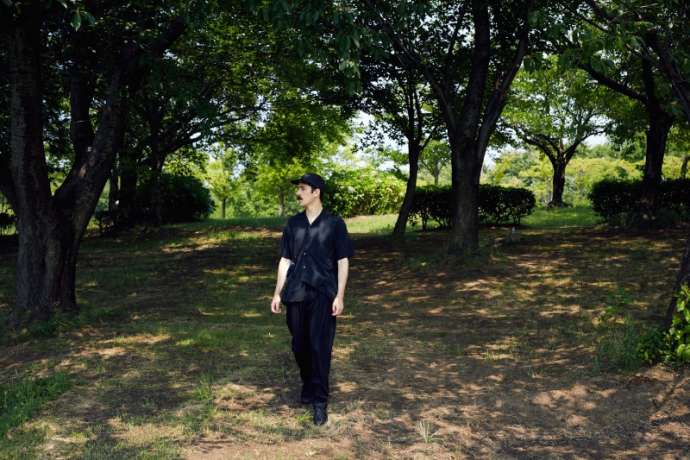
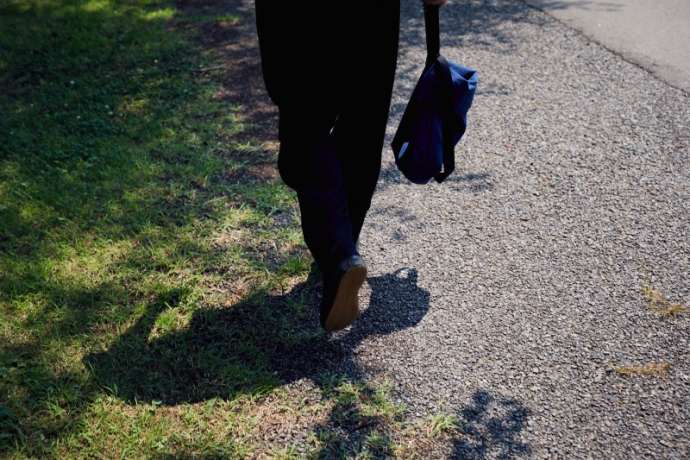
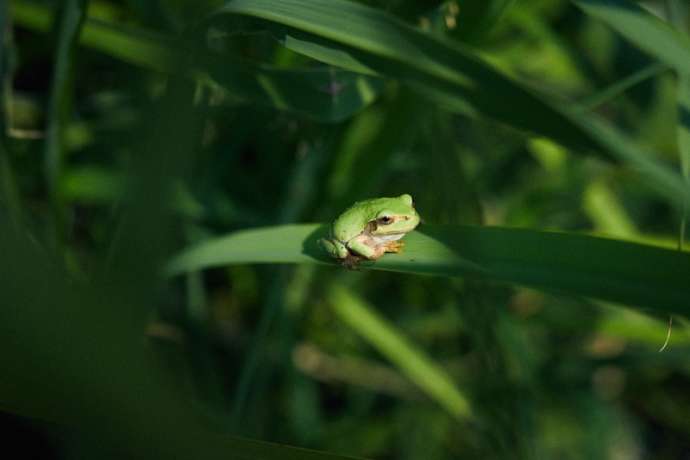
The most well-known thing about Uwasekigata Park, however, is the Rice Straw Art Festival that takes place between summer and fall each year. The event started in 2008, and features displays of massive wara art pieces made of rice straw throughout the park. A stunning highlight is a towering work five meters tall.
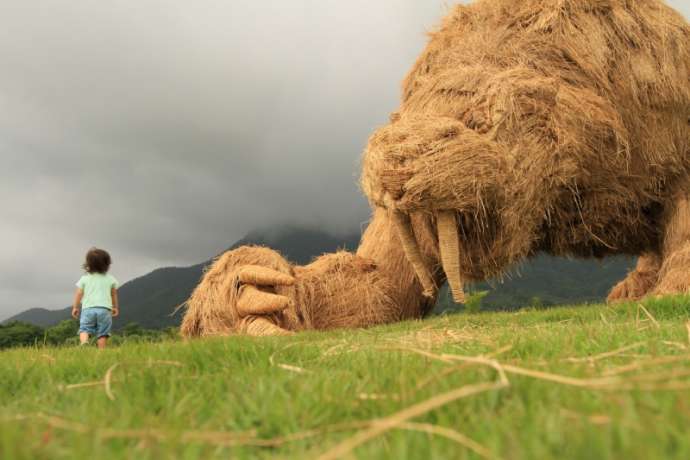
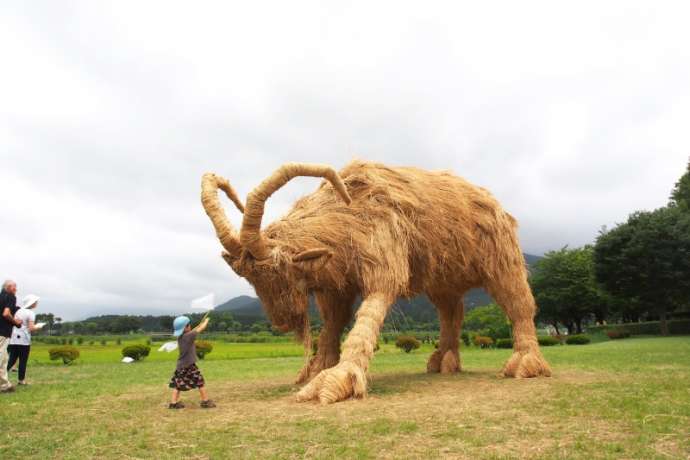
Wara art is a collaborative effort between Tokyo art college students and local farmers and artisans. The rice straw material used for the pieces is woven into flat sheets using a toba-ami traditional technique from the region.
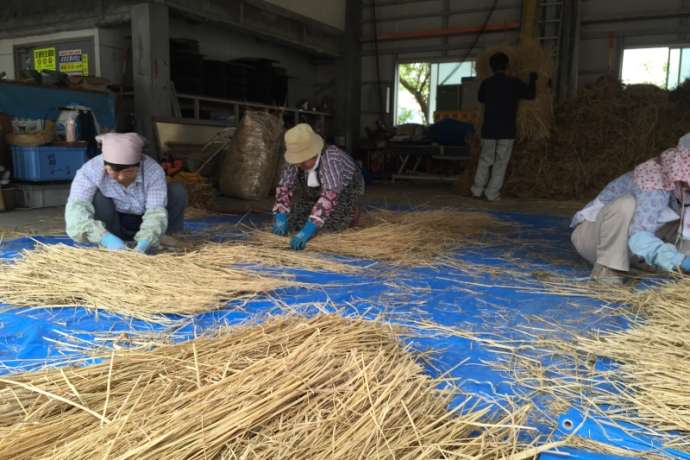
Unfortunately, the number of people who know the toba-ami technique is dwindling, and the rice straw used for the wara art is crafted by volunteers, primarily the older women in the community. Wara art itself is born from a collaboration of people of all ages—from their teens to their eighties.
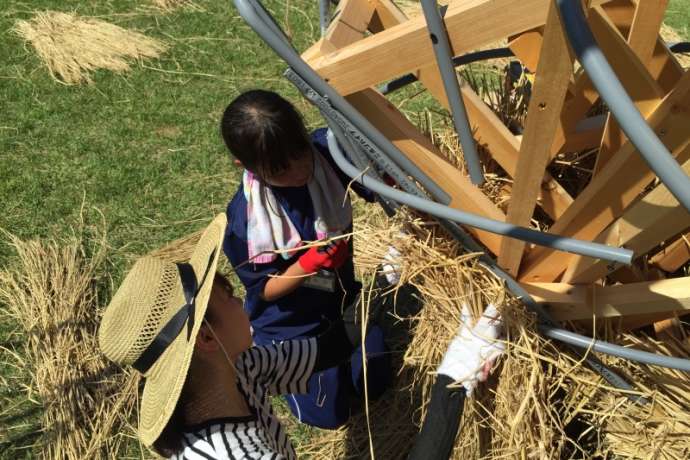
BD: These wonderful art pieces bring together the creative ideas of the younger generation and the traditional techniques of the elders in the community. The park itself is a great location that changes with the seasons, so I’d love to come back at a different time of year.

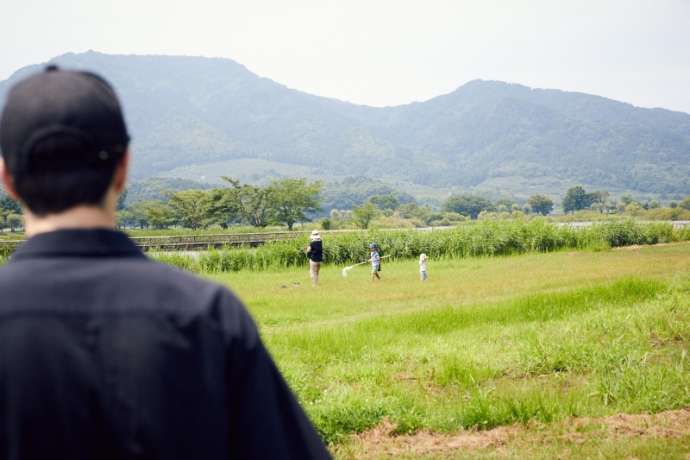
The 2019 Rice Straw Art Festival has works on display from Sunday, August 25 through Thursday, October 31 (it may end earlier if the pieces become damaged). There was an opening event on the first day of the festival (Sunday, August 25) featuring local agricultural products, food, and drinks for sale, hands-on rice straw craft workshops, and more. It was a popular and lively event!
|
Uwasekigata Park |
|
1 Matsunoo, Nishikan-ku, Niigata Getting there: About 12 minutes from JR Maki Station by taxi or bus https://www.city.niigata.lg.jp/kurashi/park/shoukai/area/nishikanku/uwaseki.html |
|
Rice Straw Art Festival 2019 |
|
Address: 1 Matsunoo, Nishikan-ku, Niigata Getting there: About 12 minutes from JR Maki Station by taxi or bus http://www.city.niigata.jp/nishikan/welcome/img/common/WaraArtFestival2019_english.pdf |
Next head west for 11 minutes by car or tour bus from Uwasekigata Park to Kakudahama Beach Resort. You can also get there in 23 minutes by car from Maki Station.
Next head west for 11 minutes by car or tour bus from Uwasekigata Park to Kakudahama Beach Resort. You can also get there in 23 minutes by car from Maki Station.
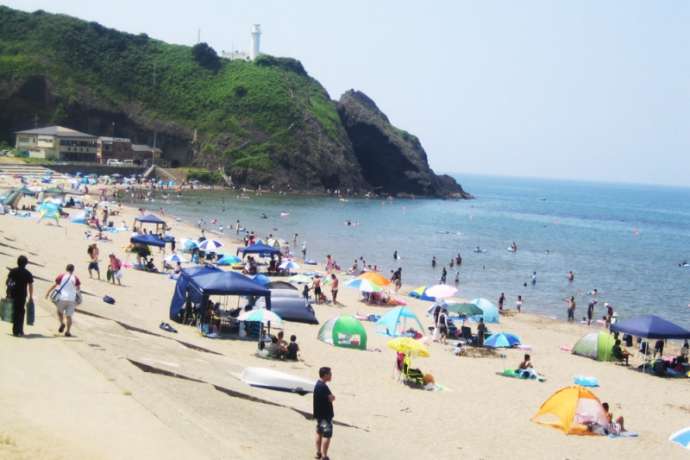
The resort features a large sandy beach at the foot of Mt. Kakuda. The water is shallow here and there are very few waves, making it safe for children to play and drawing lots of families in the summertime. No wonder it is such a popular spot for the locals!
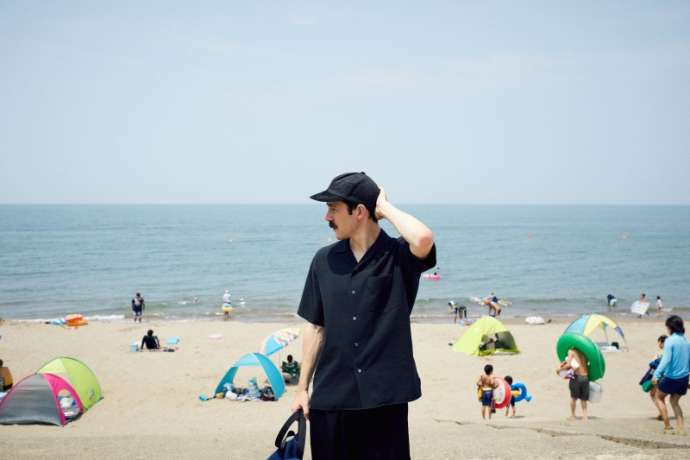
When the weather is clear, you can even see Sadogashima, Japan’s largest island, in the distance—and beyond that catch a gorgeous sunset.
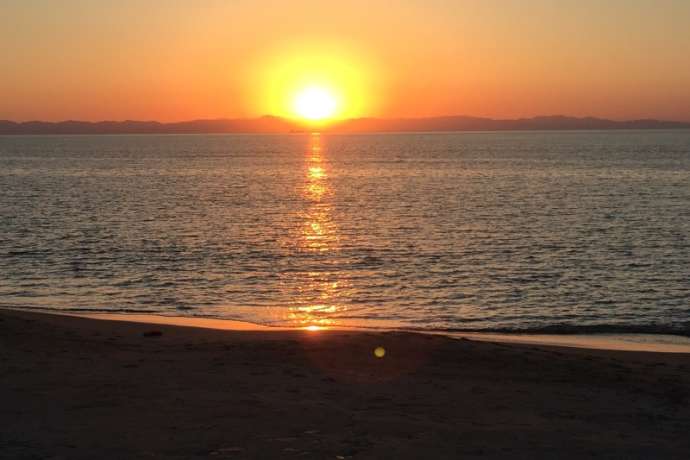
The beach at Kakudahama is liked with classic Japanese beach houses. Despite the name, they’re not actually homes—instead, they are rest facilities open between mid-July and late August where beachgoers can change, shower, store their belongings, and so on. You can pay a flat fee to use them pretty much all day (from morning until evening), and some are operated like guest houses where you can pay to stay overnight as well.
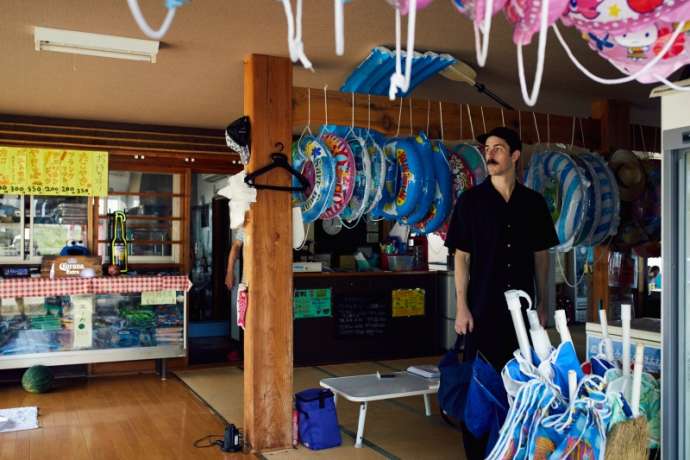
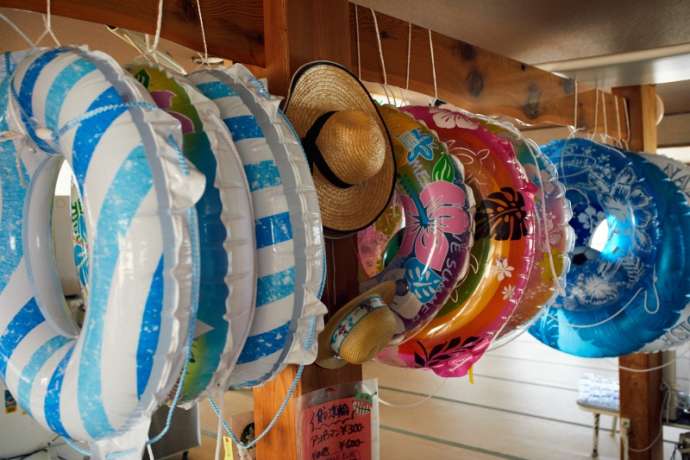
Beach houses have floats, parasols, and other beach items for rent as well as snacks and drinks available—so you can stop in and use them like cafés as well.
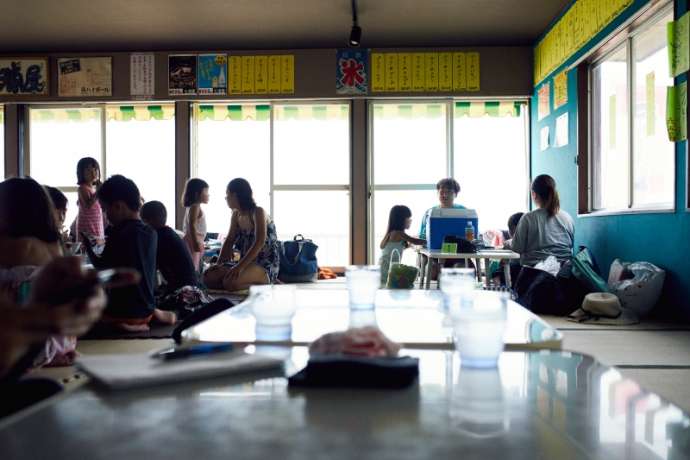
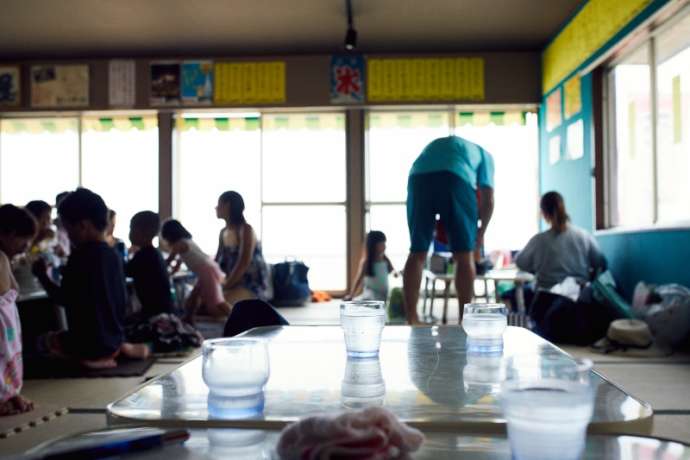
Ben stopped in to have a set meal with rice and miso soup for lunch and some shaved ice for dessert. He sat on tatami mats and relaxed as he enjoyed the cool ocean breezes.
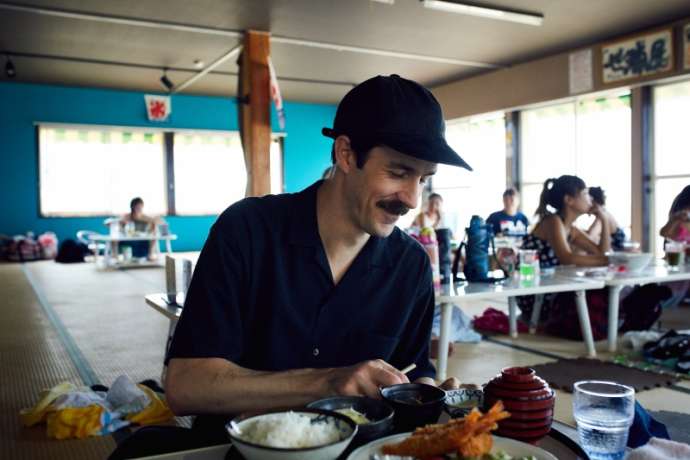
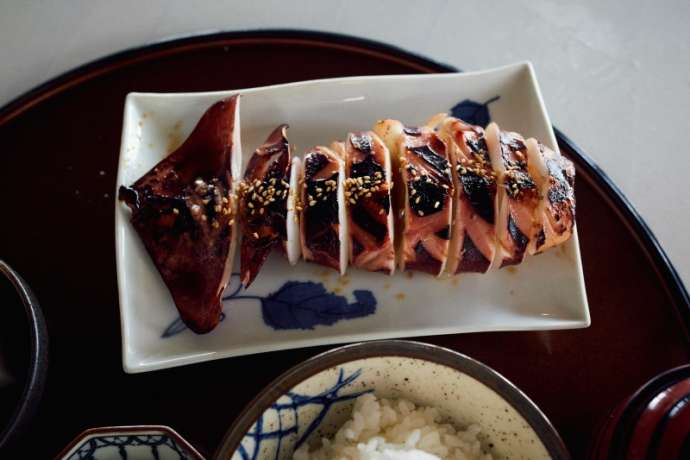
Ben is from Perth, which is known for its beautiful beaches—and he’s also been to Okinawa, one of Japan’s best marine resorts. Still, he found Kakudahama to be different from both Perth and Okinawa and charming in its own right.
BD: I think that every country, including Australia, has its own way of enjoying the beach in summer. In Japan, the beach houses not only offer a space to relax and cool off, but they also provide a wonderful dose of local flavor—including families napping at neighboring tables. They’re not quite restaurants or holiday homes; perhaps they offer something closer to the feeling of going camping. It’s a really relaxed and laid-back way to enjoy yourself.
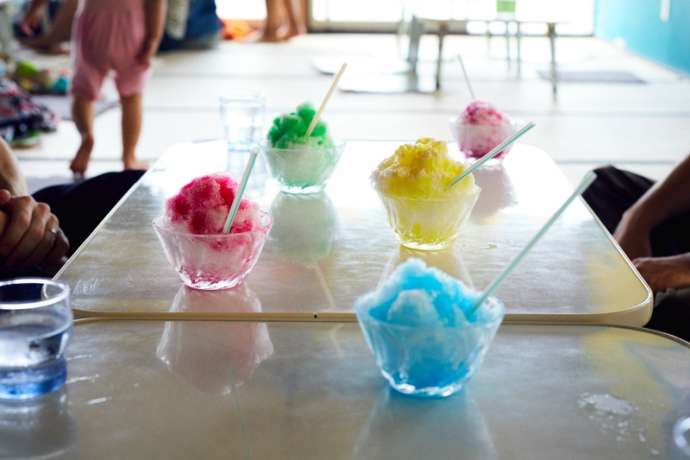
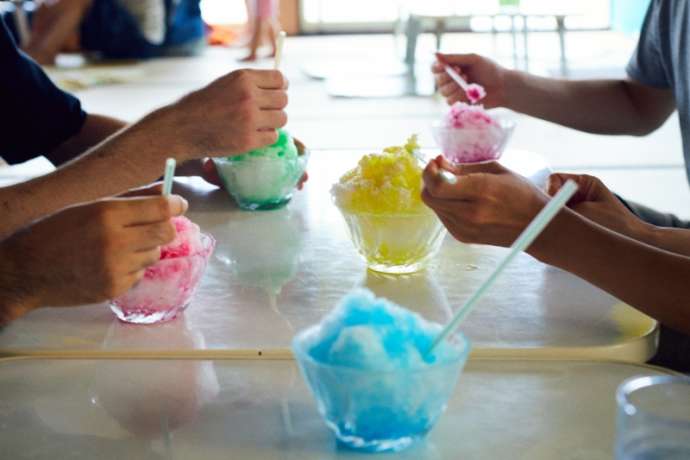
You can also take a drive along the Echigo Nanaura Seaside Line, which is a scenic route that runs along the Kakudahama Beach Resort and offers beautiful views.
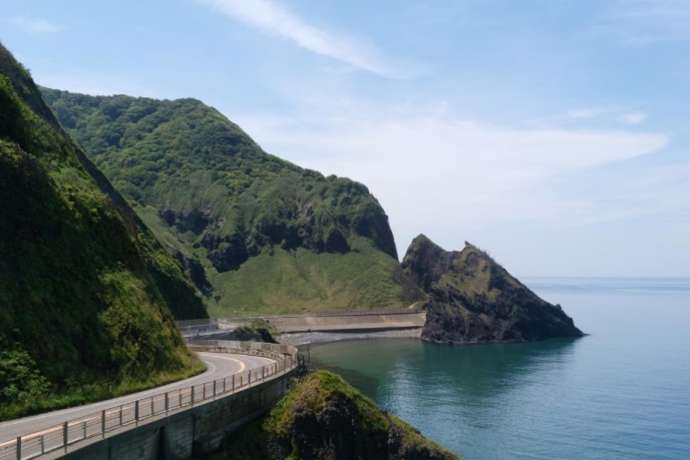
The route provides a stark contrast for the eyes as the oceans meet the sea—tranquil horizons over the sea on one side and verdant mountains on the other. There are also massive, unusually-shaped rocks here and there along the roadside and a chance to catch sweeping views of the area from the Cape Kakuda lighthouse near the Kakudahama Beach Resort. It’s a feast for the eyes that you don’t want to miss.
|
Kakudahama Beach Resort |
|
Address: Kakudahama, Nishikan-ku, Niigata Getting there: About 30 minutes by bus from JR Maki Station |
Visit Iwamuroya and get information to enhance your experience of more than 400 years of hot spring history
Once you’ve had your fill of the ocean, head through the mountain tunnels back into the interior of Nishikan. There you’ll find the Iwamuro Hot Spring area. On the way, stop at a tourist information facility called Iwamuroya, about 16 minutes by car or tour bus from Kakudahama. There you’ll find tourist information on the area, locally-grown vegetables, food, and crafts for sale, and more. You can also sit down for a meal or rent electric bicycles.
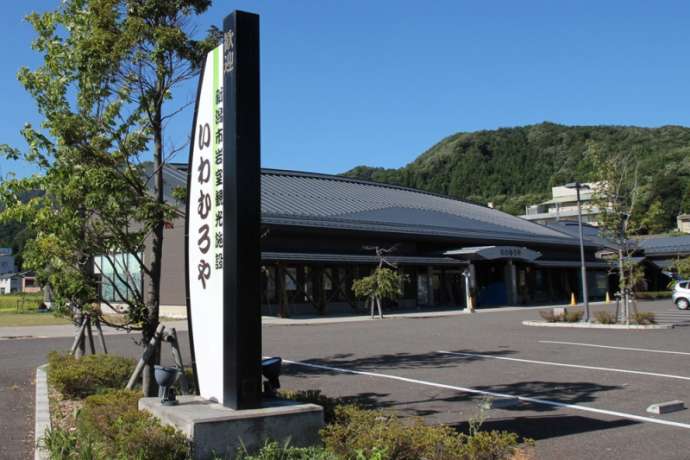
There is also a standing outdoor display of rice straw art, plus a variety of events that are typically held on the weekends. This makes Iwamuroya a great place to interact with the local community as well, so make sure to stop by if you’re touring the area.
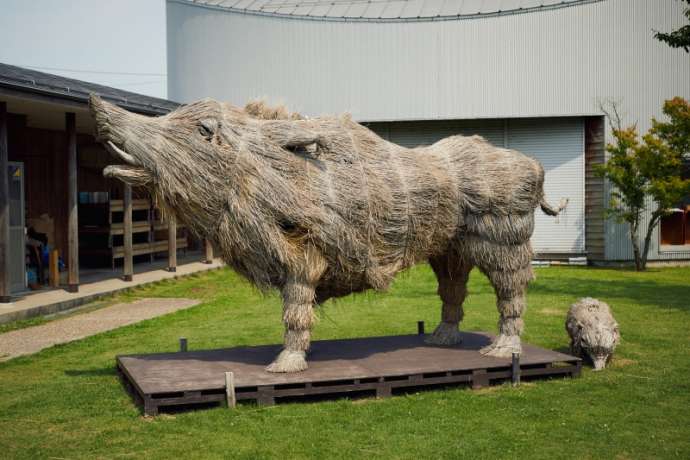
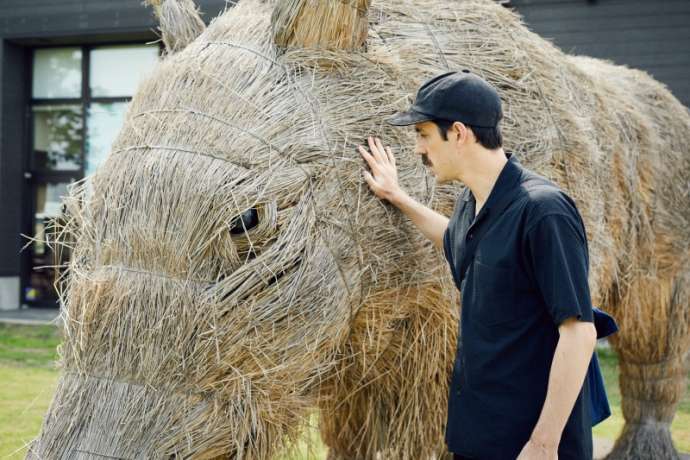
The surrounding area is covered in vast rice paddies. Ben found the scene particularly enchanting, saying that the rich green of the fields really struck him.
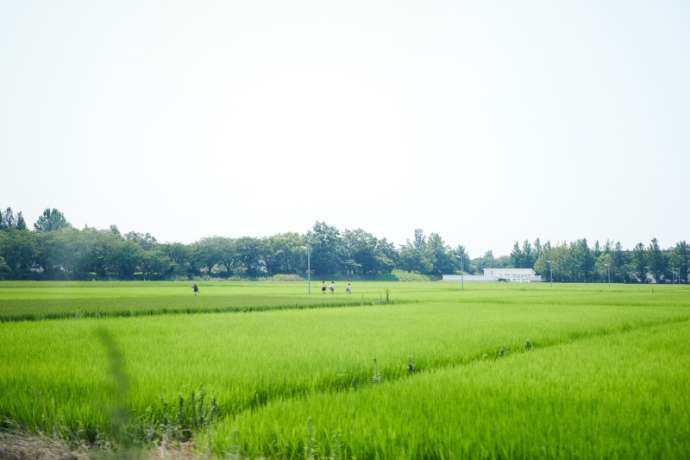
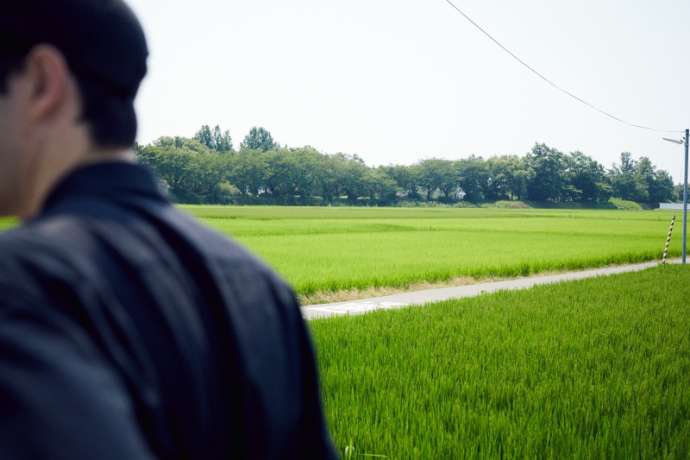
BD: The Australian countryside is impressively vast, but it can also feel overwhelmingly powerful at times. In the various regions of rural Japan, people live close to nature and, compared to Australia, I feel they have a different connection to their surroundings. That’s why I find the Japanese countryside so deeply calming. You can relax while experiencing nature.
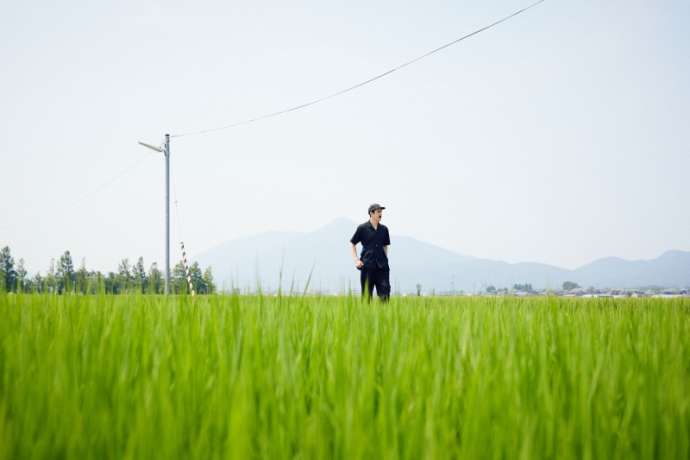
To get to Iwamuroya, you can either take the tour bus mentioned earlier or take a special direct taxi from Niigata Airport (this takes about 50 minutes). It’s called the Niigata West Coast Liner, and it runs once a day. You need to reserve your spot by noon on the day before, but you can do this online through their English website.
|
Iwamuroya |
|
Address: 96-1 Iwamuro Onsen, Niigata Getting there: About 10 minutes by taxi from JR Iwamuro Station http://www.iwamurokankou.com/images/index/leaflet/english.pdf |
|
To reserve a seat on the Niigata West Coast Liner |
Information
|
Niigata | Japan Travel | JNTO |
|
https://www.japan.travel/en/destinations/hokuriku-shinetsu/niigata/ |
Next Article:
Discover Japanese food and natural beauty in Niigata with Australian editor (Part II of II)




























































